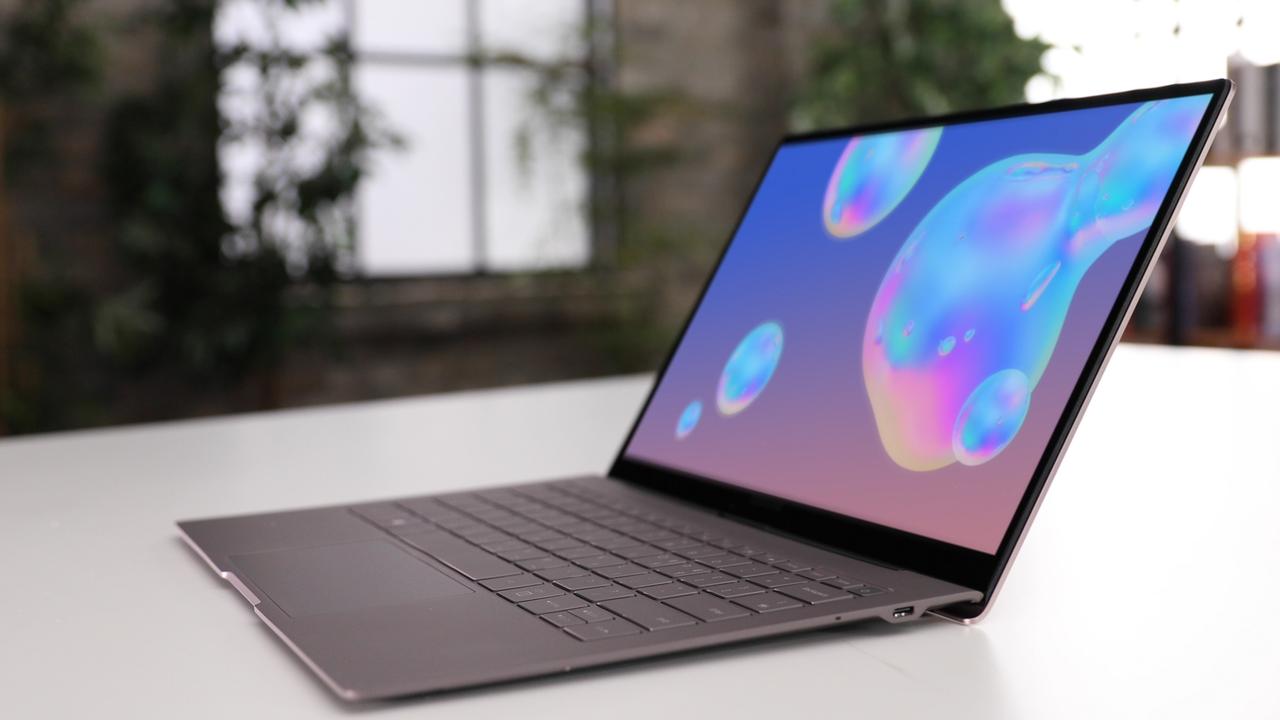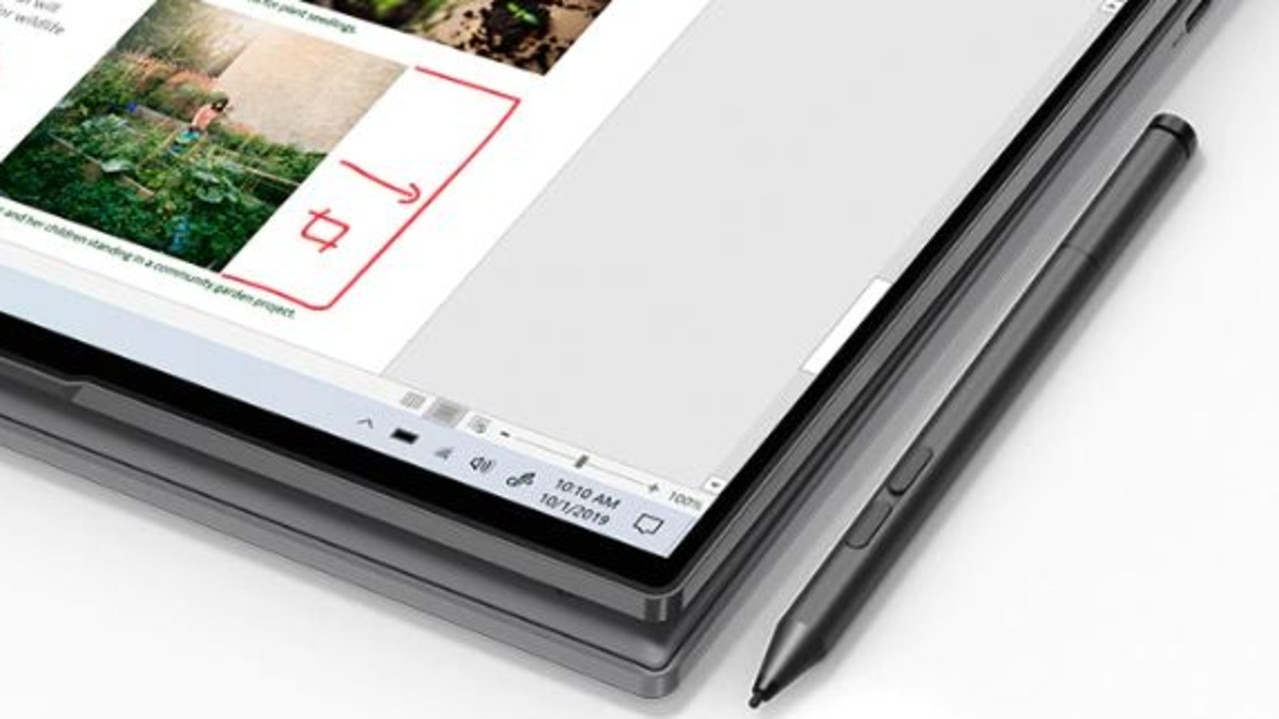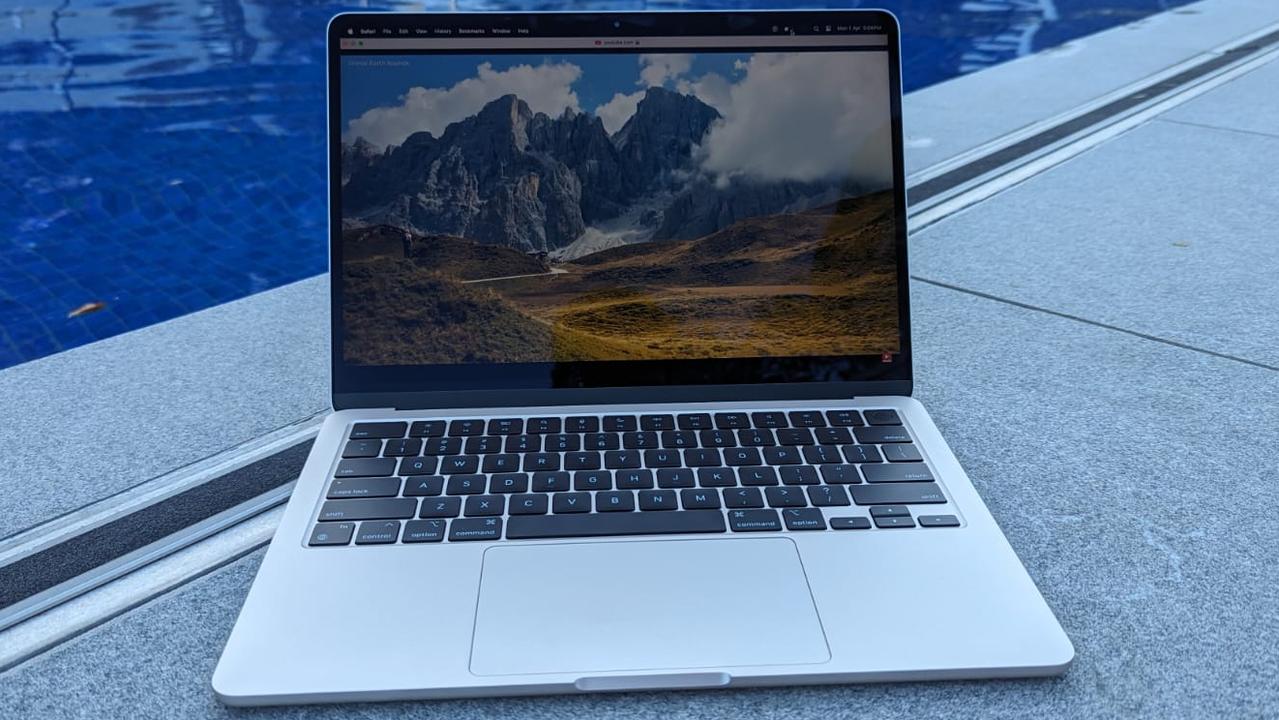New generation of laptops more like smartphones with ‘always on’ 5G connectivity
It’s free but using public Wi-Fi connections can come with the huge risk of having your information stolen. This could be the solution.
If you had walked into any cafe or airport pre-pandemic odds are the place would have been filled with people typing away on their laptops.
Many of those lucky enough to still have our jobs are for the most part working at home from the moment, but already the wait is on for when we can go back to our normal lives.
When we do return it will be to a workforce that’s changed dramatically, and the tools we rely on are soon to be changing soon too.
As productivity focused devices like laptops have become smaller, lighter and more powerful, they’ve become part of many people’s everyday kit.
But despite being super portable, one annoying issue remains – connecting to Wi-Fi on the go.
There are basically two options – go through the clunky process of creating a hotspot off your smartphone or connect to unsecured public Wi-Fi, that can be exploited by hackers to access your files and steal data without you knowing.
Timed with the introduction of 5G networks currently rolling out around the country, device makers are looking to the future of mobile computing that will make our laptops more like our always connected smartphones.
Companies like Samsung and Lenovo have both announced new laptops that blend the portability and long battery lives of smartphones and tablets with the power of fully-fledged laptop computers.
The key to the change will be the processors inside — the ones inside this new generation of laptops will come from chipmaker Qualcomm, which has built its name over the past decade with its Snapdragon range of smartphone processors.
Unlike traditional processors you’d find in a laptop or desktop computer, Qualcomm’s will bring everything you love about your smartphone: instant-on wake times, cellular wireless, and silent operation, to new ranges of fanless, thin, and light laptops that are always connected.
The chips are ideal for small portable devices because they require less power and produce less heat so devices don’t need space for fans.
But there are some things you need to know.
It gets a little technical: but basically the new Qualcomm processors use a different architecture than the x86 Intel or AMD processors you’d previously find in a laptop.
This different architecture is called ARM.
SO WHAT DIFFERENCE DOES THAT MAKE?
While it does give the potential for sleek new designs, these chips won’t run the same Windows or MacOS operating systems you’d usually find on a laptop, because they were coded differently – essentially the computational equivalent of speaking in another language.
That’s the reason you can’t (officially) install Android on your computer (without some hacking and code writing).
It also means Microsoft has had to create a new version of Windows 10 that can run on ARM architecture, and while it has now done this, some third-party developers are yet to catch up.
This means some popular apps won’t work on an ARM-based laptop at this stage, but likely will in the future.
In any case, cloud-based productivity suites like Google Docs or Office365 will work through your browser as well as via desktop installation, and the new laptops are focused on portability and connectivity first, rather than providing the most power.
WHY 5G IN A LAPTOP?
There will be only two 5G laptops in stores this year but these new models are ahead of the curve and the rest of industry will soon catch up.
As 5G networks expand and more manufacturers add support, it will mean the end to desperate searches for often unsecured public Wi-Fi networks.
While you could use a portable hotspot and tether to your phone, using an integrated connection saves you engaging in the fairly clunky process of hotspotting, with the added benefit that you won’t decimate your phone battery doing it.
The constant connection and instantaneous boot times means 5G laptops are ready to go in the same way as your smartphone.
SAMSUNG GALAXY BOOK S – $1699

Blink and you’d have missed them but Samsung briefly sold laptops in the Australian market a few years ago.
After a few years in the wilderness (save the odd 2-in-1), the company is now bringing laptops back to Australian stores with the Galaxy Book S now in JB Hi-Fi, Harvey Norman and Samsung stores.
The Galaxy Book S is now slightly more expensive than Apple’s newly released MacBook Air (which dropped to $1599 following the possibly related release of the Book S), and while they share a lot in common, there’s a powerful argument to suggest Samsung gives you more bang for your buck.
Both have near instantaneous start-ups and logins, both support using your fingerprint as your password, both have 13.3-inch screens (Apple’s is higher resolution but on a screen this size you’d be hard pressed to notice).
Both are very thin and very light (though the Samsung considerably more so, its weight being measured in grams rather than kilograms) and both come with 8GB RAM.
But the two features the Galaxy Book S focuses on puts it in a different class to the MacBook Air.
Samsung claims the Galaxy Book S will last up to 25 hours playing video, almost double the 13 hours claimed by the MacBook.
It also supports a nano-SIM for 5G data. That same slot also supports microSD cards up to a terabyte, giving you a cheap way to add more storage on top of the 256GB that’s included as standard.

Like the MacBook Air, the Galaxy Book S also charges via a USB-C connection, but unlike Apple, Samsung also uses this connection for its phones, so if you buy into the “ecosystem” it can also reduce the amount of chargers and cables you need to keep track of (though be careful to check the wattages as using too powerful a charger could damage your phone, or worse, yourself).
LENOVO YOGA 5G — PRICE TBC

Lenovo claimed the Yoga 5G will be the first 5G laptop available, which doesn’t appear to be true as it hasn’t even come out yet.
While it might not beat the Galaxy Book S to market, it may be able to compete with it when it does, depending on what it ends up costing.
Lenovo will be using the same Qualcomm Snapdragon 8cx 5G compute platform as Samsung, but the Yoga will be a little bit heavier, expected to weigh closer to 1.3 kilograms.

Lenovo claims one charge will last you a full 24 hours, one whole day of constant use.
Memory and storage allocations are the same as the Samsung, but Lenovo doesn’t have the microSD slot found on the Galaxy Book S.
In keeping with the Yoga brand, Lenovo’s 5G laptop has the ability to fold its 14-inch screen all the way to the back and turn the laptop into a quasi-tablet, which the Samsung can’t do.
Lenovo will also support pen input on the Yoga, which Samsung didn’t include on the Galaxy Book S despite having the lauded S Pen in its oeuvre.
Lenovo will also support e-SIM in addition to the nano-SIM slot.
Will you upgrade for better battery life and constant connection on your next laptop? Let us know what you think in the comments below.



